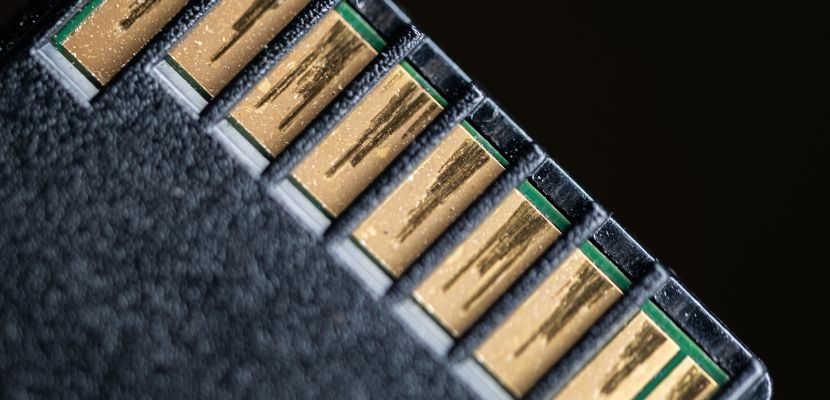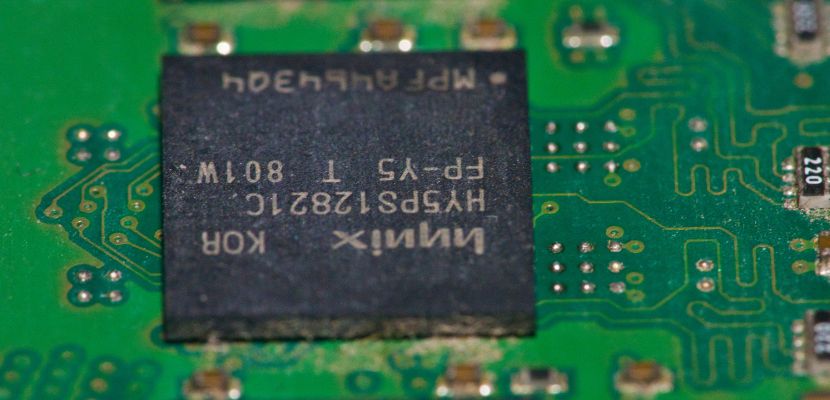Read-only memory (ROM) is a type of non-volatile storage used in computers and electronic devices to permanently store essential data.

What Does ROM Mean?
Read-only memory, commonly known as ROM, is a type of non-volatile memory used in computers and other electronic systems to store data that does not change during normal operation. It contains essential instructions and system data that are required for the device to boot up and function properly.
The contents of ROM are written during the manufacturing process or through specialized programming and cannot be easily modified or erased by the end user. Unlike volatile memory such as RAM, ROM retains its data even when the power is turned off, ensuring that critical software such as firmware, BIOS, or embedded system code remains available at all times. This makes ROM a reliable and secure solution for storing foundational software necessary for hardware initialization and operation.
Is ROM Still Used?
Yes, ROM is still widely used in modern computing and electronics. While traditional ROM chips with permanently written data are less common, the concept of read-only memory remains essential for storing firmware, system boot instructions, and other critical software.
In practice, many devices use advanced forms of ROM such as EEPROM (electrically erasable programmable ROM) or flash memory, which allow limited updates while still preserving data without power. These technologies are found in everything from smartphones, routers, and gaming consoles to industrial machines and embedded systems, ensuring reliable startup processes and secure storage of system-level code.
Types of ROM
Let’s go through different types of ROM and their characteristics.
Mask ROM (MROM)
Mask ROM is the original form of ROM, where the data is permanently written during the manufacturing process using a photolithographic mask. It is not reprogrammable or erasable, making it highly reliable for mass-produced devices where the stored data never changes. However, its lack of flexibility limits its use to situations where the code is finalized and stable.
Programmable ROM (PROM)
PROM is a type of ROM that is manufactured as blank and can be programmed once by the user or manufacturer using a special device called a PROM programmer. Once programmed, the data becomes permanent and cannot be altered. PROM offers more flexibility during production compared to mask ROM but does not allow future updates.
Erasable Programmable ROM (EPROM)
EPROM can be erased and reprogrammed multiple times using ultraviolet (UV) light. The chip has a transparent quartz window through which UV light is applied to erase the data. After erasure, new data can be written using a PROM programmer. EPROM provides greater flexibility for development and testing, though the erasure process is relatively slow and requires physical removal from the system.
Electrically Erasable Programmable ROM (EEPROM)
EEPROM improves upon EPROM by allowing data to be erased and rewritten electrically, without removing the chip from the system. It offers convenient reprogramming in place, making it ideal for storing configuration settings or firmware updates. EEPROM supports selective erasure at the byte level, though its write and erase cycles are limited compared to more volatile memory types.
Flash Memory
Flash memory is a modern evolution of EEPROM that allows high-speed electrical erasure and reprogramming of larger memory blocks. It combines the non-volatility of ROM with faster, more efficient updates, making it suitable for applications like BIOS storage, firmware updates, USB drives, memory cards, and solid-state drives. Flash memory is the most common ROM variant in contemporary devices due to its balance of speed, durability, and flexibility.
ROM Key Characteristics

ROM plays a critical role in computer systems and embedded devices by storing essential instructions and data that must remain intact, even without power. Its characteristics include:
- Non-volatile storage. ROM retains data even when the device is powered off. This ensures that critical instructions, such as boot code or firmware, are always available when the system starts.
- Permanently or semi-permanently written data. Traditional ROM stores data that cannot be changed, while modern versions like EEPROM or flash allow data to be updated, though typically less frequently than RAM.
- High data integrity and stability. The data stored in ROM is resistant to accidental modification or corruption, making it reliable for holding core software such as BIOS, embedded system code, or bootloaders.
- Limited write or erase capability. Most ROM types offer minimal or no ability to modify data after manufacturing. Reprogrammable types like EEPROM and flash provide controlled updates but still have write-cycle limitations compared to RAM.
- Faster access for critical operations. ROM provides quick access to essential instructions required during system startup, ensuring devices can initialize and function without delay.
- Low power consumption. ROM consumes minimal power when storing and maintaining data, contributing to energy efficiency in embedded systems, consumer electronics, and portable devices.
- Physical integration. ROM is often embedded directly onto motherboards, microcontrollers, or integrated circuits, making it tamper-resistant and space-efficient.
How Does ROM Work?
ROM works by storing data in a permanent, non-volatile format that can be read by a computer or electronic device but cannot be easily modified. The memory cells within ROM are configured during manufacturing or programmed later, depending on the type of ROM used. These memory cells are made up of microscopic circuits that represent binary data (0s and 1s), with the physical structure of the chip determining the stored information.
When the system is powered on, the processor accesses ROM to retrieve essential instructions needed to start the device, such as the BIOS or bootloader. Unlike RAM, which requires constant electrical power to maintain its contents, ROM retains the data without power, ensuring that critical software is always available.
In reprogrammable versions of ROM, electrical signals or ultraviolet light are used to alter the data under specific conditions, but regular operation only allows read access. This read-only design ensures that ROM delivers consistent, unaltered instructions essential for reliable system initialization and operation.
What Is ROM Used For?
ROM is used to store essential software and data that must remain unchanged and accessible even when a device is powered off. Its primary purpose is to hold firmware, which includes low-level code that controls hardware initialization and provides the basic instructions needed for a system to start operating. In computers, ROM contains the BIOS or UEFI, responsible for booting the system and performing hardware checks before the operating system loads.
Beyond computers, ROM is widely used in embedded systems, such as those found in appliances, automotive controls, medical equipment, and consumer electronics, where reliable, permanent software is required for device functionality. It also stores software in gaming consoles, network hardware, industrial machines, and microcontrollers.
Additionally, ROM technologies like flash memory are used to store system updates, mobile firmware, and secure boot processes, making ROM a foundational component for stable and consistent system performance across countless devices.
What Are the Advantages and the Disadvantages of ROM?
While ROM is essential for storing permanent instructions and ensuring reliable system startup, it also comes with limitations. Understanding the advantages and disadvantages of ROM helps explain why it remains a core component in modern devices.
ROM Advantages
The advantages of ROM include:
- Non-volatile storage. ROM retains data even when the device is powered off, ensuring that critical instructions such as firmware, BIOS, or bootloaders are always available when the system starts.
- High reliability and data stability. Once programmed, the contents of ROM cannot be easily altered or corrupted, providing consistent and stable performance. This makes ROM ideal for storing system-critical code that must remain unchanged.
- Secure and tamper-resistant. Because ROM is typically fixed or difficult to reprogram, it offers a level of protection against unauthorized changes, helping to secure low-level system operations and prevent accidental modifications.
- Low power consumption. ROM consumes minimal power to retain data, making it suitable for use in embedded systems, portable electronics, and battery-powered devices where energy efficiency is critical.
- Cost-effective for mass production. For high-volume manufacturing, especially with mask ROM, the cost per unit becomes low once the design is finalized, making it an economical choice for devices with fixed software requirements.
- Fast access to essential code. ROM provides quick read access to stored instructions, ensuring that devices initialize and perform system checks rapidly during the boot process.
ROM Disadvantages
On the other hand, keep in mind the following ROM disadvantages:
- Limited or no rewritability. Traditional ROM types, such as mask ROM or PROM, cannot be modified once programmed. Even in programmable versions like EEPROM or flash, updates are restricted and often require specialized procedures, making ROM unsuitable for frequently changing data.
- Slower write operations (for programmable types). Although reading from ROM is fast, writing or erasing data in programmable types (EEPROM or flash) is significantly slower compared to volatile memory like RAM.
- Finite write/erase cycles. Reprogrammable ROM types have a limited number of write and erase cycles before the memory cells degrade. This makes them unsuitable for applications that require constant data modification.
- Higher production costs for custom data. In mask ROM, where data is permanently written during manufacturing, changes to the stored code require entirely new production runs, increasing costs and development time if updates are necessary.
- Lower flexibility compared to RAM. ROM's primary function is to store fixed or semi-fixed data, making it inflexible for tasks that require frequent updates, temporary storage, or real-time data manipulation, all of which rely on RAM or other memory solutions.
ROM vs. RAM
Here’s a comparison of ROM vs. RAM in table form:
| Feature | ROM (read-only memory) | RAM (random access memory) |
| Volatility | Non-volatile (retains data without power). | Volatile (loses data when power is off). |
| Purpose | Stores permanent instructions like firmware. | Temporarily stores data for active processes. |
| Data modifiability | Limited or no ability to modify data. | Data is easily written, modified, and erased. |
| Typical usage | BIOS, bootloader, firmware, embedded code. | Running applications, OS processes, temporary data. |
| Speed | Fast for reading, slow or fixed for writing. | Fast read/write speeds optimized for performance. |
| Data retention | Retains contents permanently or semi-permanently. | Data is lost after shutdown or reboot. |
| Flexibility | Low flexibility; designed for stable storage. | High flexibility; handles dynamic tasks and operations. |
| Cost per bit | Generally lower for large, fixed storage. | Higher cost per bit, but essential for performance. |
Is ROM the Same as CPU?
No, ROM and CPU are not the same; they serve entirely different functions within a computer or electronic device.
ROM is a type of non-volatile storage that holds permanent or semi-permanent data, such as firmware or system boot instructions, which the device needs to start and operate. In contrast, the CPU (central processing unit) is the main processor responsible for executing instructions, performing calculations, and managing data flow within the system.
While the CPU reads data from ROM during the boot process, they are separate components. ROM stores critical information, whereas the CPU processes instructions and controls system operations.